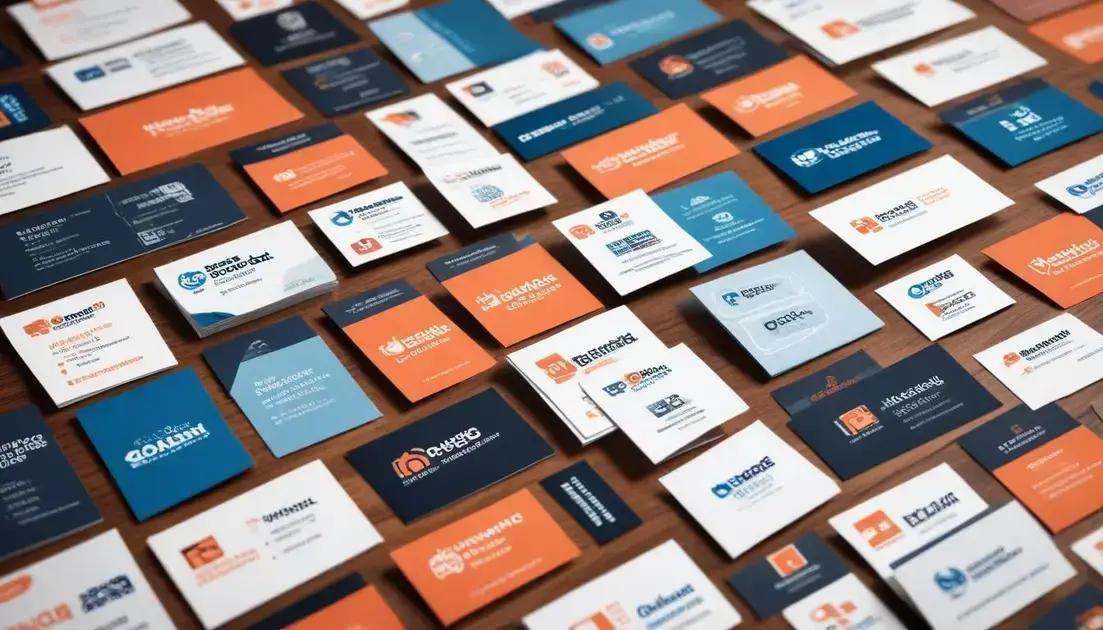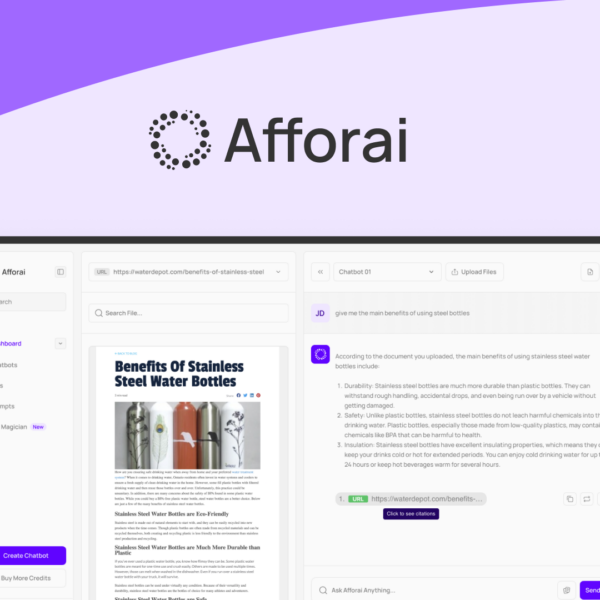Business cards play a pivotal role in shaping brand identity, serving as essential tools for networking. Whether traditional or digital, their impact is significant! Keep reading to discover how to leverage business cards effectively!
The Evolution of Business Cards
Business cards have come a long way since their inception. Initially, these cards were used as a tool for trade. They told people who you were and what you did. Over time, the design and purpose of business cards have evolved.
The Early Days of Business Cards
In the past, business cards were simple, with just basic information. They were mainly shared among trade professionals. As business grew, so did the need for professional identity. Business cards became a way to represent one’s brand and values.
Shift to Personal Branding
Today, business cards are more than just contact information. They serve as a marketing tool that conveys personal branding. A well-designed card can leave a lasting impression. This is important in the competitive business world.
The Rise of Digital Business Cards
With technology advancing, digital business cards have emerged. These cards can be shared via smartphones and social media. They offer more flexibility and can easily be updated. This shift reflects our busy, tech-savvy lives.
Current Trends in Business Cards
Today, one can find countless designs and materials. From eco-friendly choices to unique shapes, the options are endless. Creativity in design can help a card stand out. It shows the personality of the business owner, too.
Why Business Cards Matter Today
Despite the growth of digital communication, business cards are still relevant. They provide a tangible reminder of a meeting or event. Handing someone a card creates a personal connection that digital messages often lack.
In summary, the evolution of business cards highlights the importance of adapting to change. As we move forward, it’s essential to understand how these cards can continue to represent our professional identities in new and exciting ways.
Digital Transformation in Business Cards

Digital transformation is changing the way people use business cards. These cards are no longer just paper; they can be digital, too. A digital business card can be shared with a tap on a smartphone.
The Shift to Digital Formats
With smartphones everywhere, digital business cards are gaining popularity. They are easy to create and can be updated at any time. You can quickly add your latest information, like new phone numbers or job titles. This flexibility is a huge plus.
How to Share Digital Business Cards
Sharing a digital card can be simple. You can use QR codes or links. Just let someone scan your code, and they have all your details instantly. This fast sharing can help you connect quickly during networking events.
Benefits of Digital Business Cards
Digital cards are also eco-friendly. They reduce paper waste, which is great for the environment. Plus, you can track how often people save your card. This can provide valuable insights into your network and how you connect with others.
Integrating Digital Cards into Networking
When meeting new people, digital business cards can show professionalism. They demonstrate a modern approach to networking. Most people are familiar with using technology, so they will appreciate the ease of a digital card.
Creating Your Digital Business Card
Creating a digital business card is usually straightforward. Many apps and websites help you design and store your card. Choose colors and styles that reflect your brand. Make sure it’s easy to read and understand.
Impact on Brand Recognition
Business cards play a key role in brand recognition. They are often the first impression someone gets of your business. A well-designed business card can help people remember you and your brand.
The Importance of Design
Design matters when it comes to business cards. Using colors, logos, and fonts that reflect your brand can make a big impact. It sets the tone and shows your business’s personality.
Creating Memorable Impressions
When you hand someone a business card, you want them to remember you. Creative designs can help with this. Unusual shapes or materials can catch attention and keep your card in their mind.
Consistency Across All Materials
Your business card should match your other branding materials. This includes your website, social media, and promotional items. Consistency builds trust and helps people recognize your brand easily.
Using Business Cards for Networking
Every time you meet someone new, it’s a chance to share your brand. Business cards make networking easier. They can spark conversations and lead to new connections.
Tracking Your Brand Reach
Some people even add QR codes to their cards. This lets others scan and get more information about the brand. It’s a modern way to connect and track interest in your business.
Overall, business cards are more than just contact info. They help create lasting brand recognition. With careful design and attention to detail, they can be a powerful tool for your business.
Psychology Behind First Impressions

The psychology behind first impressions is powerful. People form opinions quickly, often within seconds. A business card can influence that initial judgment.
Why First Impressions Matter
First impressions can affect future relationships. They shape how others see your brand and personality. A positive impression leads to trust and interest.
The Role of Design
Design plays a big part in how people perceive your card. A sleek, professional card can suggest that you are serious and reliable. In contrast, a cluttered or poorly designed card can leave a negative impression.
Colors and Fonts Affect Perception
Colors and fonts can influence feelings. For example, blue often represents trust. Meanwhile, bold colors can show creativity. Choose colors that match your brand and the message you want to send.
Feelings of Connection
When you hand someone a card, it creates a connection. This small action can make the interaction more personal and memorable. It helps in building a rapport that might lead to future business.
Lasting Impact and Follow-Up
People often remember the cards they receive. A card that stands out has a better chance of being kept and shown to others. This can extend your network even further.
In summary, understanding the psychology behind first impressions can enhance your networking. A thoughtful business card can help you make the right impact from the very start.
Traditional vs Digital Business Cards
Business cards come in two main types: traditional and digital. Each has its own set of benefits. Understanding these can help you choose the right one for your needs.
Traditional Business Cards
Traditional business cards are printed on paper. They are easy to carry and can be handed out in person. Many people still prefer this tactile experience. A physical card can feel more personal and memorable.
Pros of Traditional Cards
One major benefit is their visual appeal. You can choose different textures and finishes, making your card stand out. Plus, you can easily design them to reflect your brand.
Cons of Traditional Cards
However, traditional cards have downsides too. They can get lost or damaged easily. Updating information means reprinting the cards, which can be costly.
Digital Business Cards
Digital business cards live on your smartphone or online. You can share them via email or text with just a few taps. This created a more convenient way to exchange information.
Pros of Digital Cards
Digital cards can be changed instantly, making updates easy. They also save paper and are eco-friendly. Plus, many platforms allow you to track interactions with your card.
Cons of Digital Cards
On the downside, some people still prefer physical cards. A digital card might not resonate in a face-to-face meeting. You often need a device and internet to share them.
In conclusion, both traditional and digital cards have unique advantages. Your choice depends on your preferences and the impression you want to make.
Essential Design Elements for Branding

Design elements are crucial for effective branding. They help your business stand out and create a strong impression. Here are some essential elements to consider.
Colors
Colors influence how people feel about your brand. Choose colors that reflect your brand’s personality. For example, blue can suggest trust, while red can evoke energy. Consistency in color use is key for brand recognition.
Fonts
The fonts you choose also matter. They should be easy to read and match your brand tone. A modern tech company might use sleek fonts, while a restaurant might choose more playful styles. Always use the same fonts across all materials.
Logo
Your logo is the face of your brand. It should be memorable and unique. A good logo is simple, versatile, and relevant to your business. Use it consistently on business cards, websites, and social media.
Layout and Space
Layout is important for a clean design. Use space wisely to avoid clutter. A well-organized layout makes information easy to find. This improves the overall look and feel of your business materials.
Images and Graphics
Using relevant images and graphics can enhance your brand identity. They should align with your message and style. High-quality visuals grab attention and make your brand more engaging.
Consistency Across Platforms
Consistency in design across all platforms builds trust. Whether it’s your website, social media, or print materials, your branding should look and feel the same. This connection helps customers recognize your brand more easily.
Innovative Trends in Business Cards
Business cards are evolving with innovative trends. These trends reflect changes in technology and design. Staying updated can help you make a great impression.
Eco-Friendly Materials
Many businesses are now using eco-friendly materials for their cards. This includes recycled paper and sustainable options. Using environmentally friendly materials shows your brand cares about the planet.
Interactive Digital Cards
Digital business cards are becoming popular. These cards can include links to your website or social media. They can also feature QR codes, making it easy for others to connect with you online.
Unique Shapes and Textures
Innovative designs are breaking away from the classic rectangular shape. Some are using custom shapes and interesting textures. This creativity helps your card stand out from the rest.
Augmented Reality (AR)
Some cards now use augmented reality. When scanned with a smartphone, they can show 3D images or videos. This unique feature can leave a lasting impression on potential clients.
Minimalist Designs
Less is often more. Minimalist designs focus on simplicity and clarity. A clean layout with ample white space can convey professionalism.
Personalized Cards
Personalization is on the rise. Cards that reflect personal branding and style are more memorable. This could be colors that match your personality or a unique design that tells your story.
Business Cards as Marketing Tools

Business cards are powerful marketing tools. They go beyond providing contact information. A well-designed card can help you promote your brand effectively.
Creating a Memorable First Impression
A business card is often the first thing people see. Make sure it represents your brand well. Use eye-catching designs and high-quality materials to stand out.
Showcasing Your Brand Identity
Your business card should reflect your brand’s identity. Include your logo, colors, and fonts. This creates a consistent look that people will recognize.
Including Essential Contact Information
Always include essential contact information. This includes your name, phone number, email address, and website. Make it easy for others to contact you.
Using Taglines and Slogans
A catchy tagline or slogan can make your card more memorable. It quickly conveys what your business is about. Consider adding this to help people remember your brand.
Promoting Special Offers
You can use business cards to promote special offers. Include a discount code or a unique offer. This encourages people to reach out and try your services.
Networking at Events
Business cards are essential for networking. When meeting new people, hand them your card. It’s an easy way to stay connected after the event.
In summary, business cards are more than just a piece of paper. They are effective marketing tools that can open doors and help grow your business.
Creating a Unified Brand Experience
Creating a unified brand experience is essential for success. This means every part of your brand should work together. Here are some key points to consider.
Consistent Branding Across Platforms
Your brand identity should be the same everywhere. Whether online or offline, people should see the same logo, colors, and style. This builds recognition and trust.
Clear Messaging
Make sure your messaging is clear. Everything you say should reflect your brand’s values and mission. Use language that resonates with your audience.
Aligning Customer Interactions
Every interaction with your customers matters. From the first contact to after-sales support, ensure a consistent tone and approach. This gives customers a seamless experience.
Quality Control of Materials
Use high-quality materials for all your branding items. Whether it’s business cards, brochures, or digital content, quality reflects your brand’s integrity.
Using Feedback to Improve
Listen to customer feedback and adjust your brand experience as needed. This shows you value their opinions and are committed to improvement.
Training Your Team
Ensure your team knows your brand values and message. Provide training so they can represent your brand effectively in every interaction.




